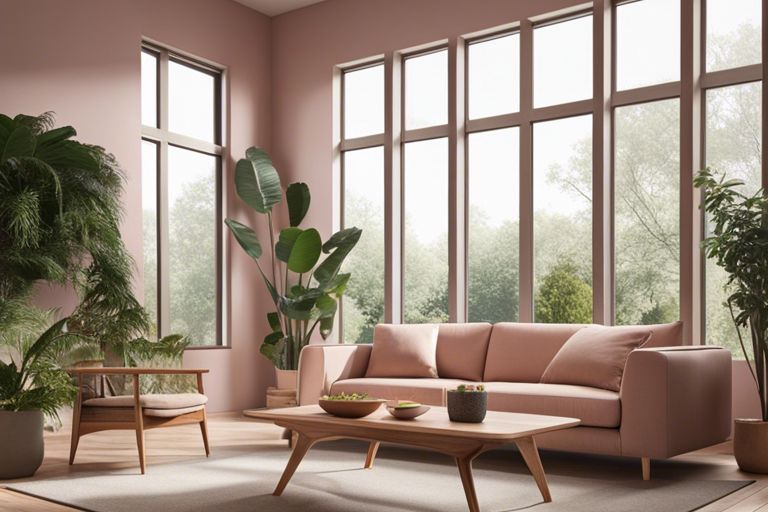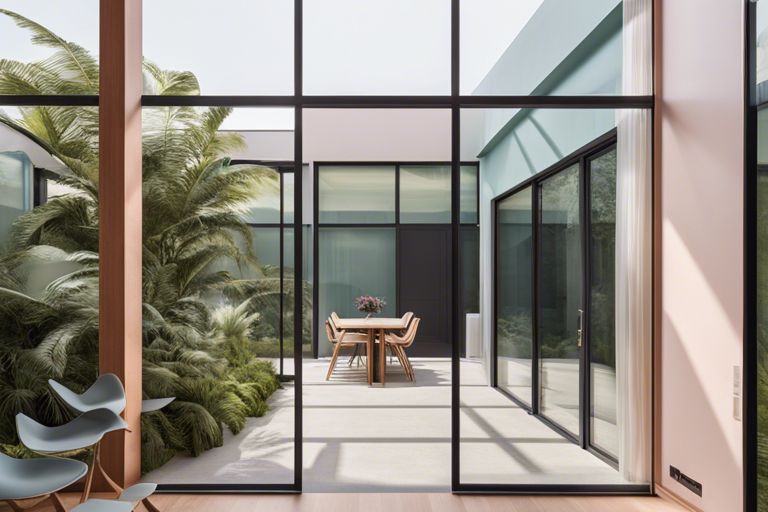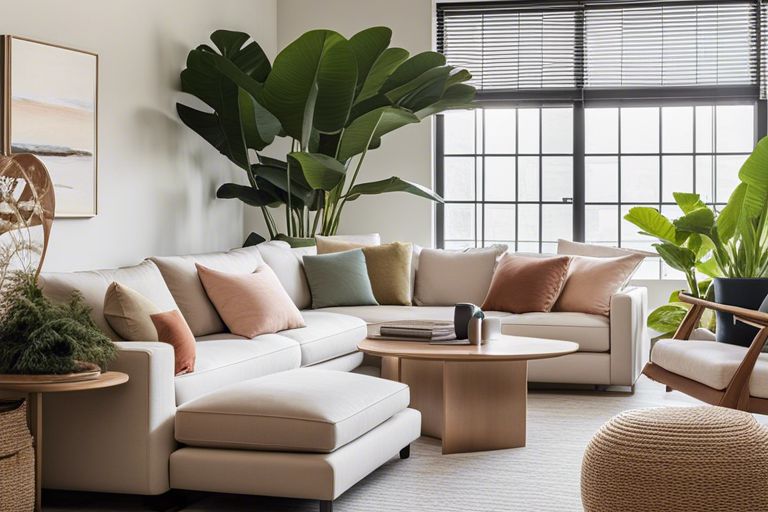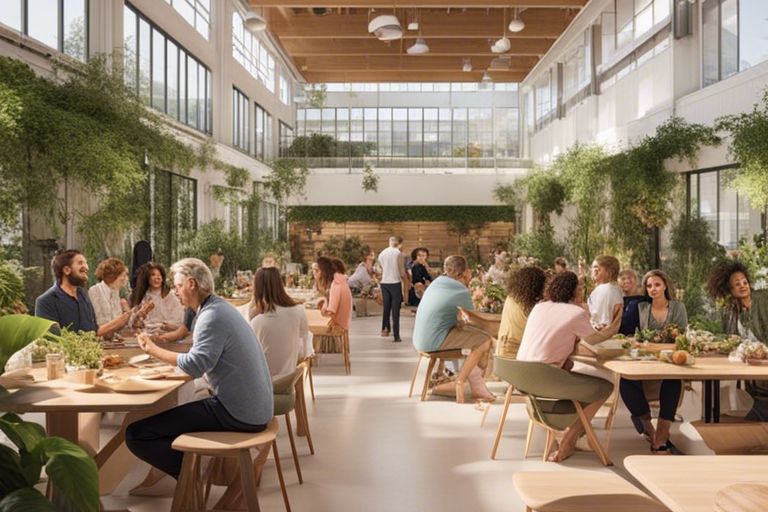With a growing awareness of the impact of our surroundings on your well-being, incorporating biophilic design into your living or working space can significantly enhance your quality of life. From reducing stress and anxiety to boosting creativity and productivity, your connection to nature within your environment plays a crucial role in promoting your overall health and happiness. In this blog post, discover insightful tips and practical guidelines for creating a healthier space through biophilic design.
Key Takeaways:
- Bring Nature Indoors: Incorporating natural elements such as plants, natural light, and water features into interior spaces can help reduce stress, improve mood, and increase productivity.
- Create Multi-Sensory Experiences: Engage all the senses in your design by including elements like textures, scents, and sounds found in nature to create a calming and rejuvenating environment.
- Embrace Biophilic Principles: Adhering to biophilic design principles can have a significant impact on overall well-being by fostering a stronger connection to nature, promoting relaxation, and enhancing creativity.
The Science Behind Biophilic Design
The Importance of Human-Nature Connection
To truly understand the impact of biophilic design on our well-being, it’s crucial to research into the scientific backdrop that supports the concept. Research has shown that humans have an inherent need to connect with nature for our physical and mental health. This connection dates back to our evolution when our survival depended on being in tune with the natural world. In today’s fast-paced, technology-driven society, this connection is often overlooked, leading to stress, anxiety, and other health issues.
How Biophilic Design Affects Mental Health
An understanding of how biophilic design affects mental health is key to creating a healthier living or working space. By incorporating elements like natural light, indoor plants, views of nature, and natural textures, you can positively impact your mental well-being. These elements have been found to reduce stress, improve cognitive function, boost creativity, and enhance overall mood.
To further elucidate how biophilic design affects mental health, studies have shown that exposure to nature or nature-inspired elements can lower cortisol levels, reduce feelings of anxiety, and promote relaxation. By integrating these elements into your environment, you can create a space that supports your mental health and enhances your overall well-being.
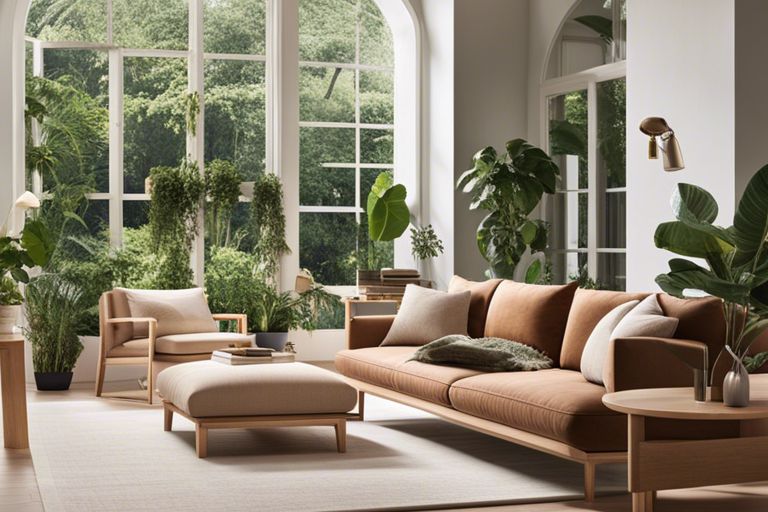
Bringing the Outdoors In
One way to enhance your well-being through biophilic design is by bringing elements of nature into your indoor space. This can be achieved through various methods, such as incorporating natural light, ventilation, plants, and greenery into your environment.
Natural Light and Ventilation
Ventilation: Opening windows and allowing fresh air to circulate in your space not only improves air quality but also helps create a connection to the outdoors. Natural ventilation plays a critical role in maintaining a healthy indoor environment by reducing pollutants and promoting a sense of well-being.
Incorporating Plants and Greenery
Ventilation: Introducing plants and greenery into your space can have numerous benefits for your well-being. Plants not only help purify the air by removing toxins but also have been shown to reduce stress, boost mood, and increase productivity. Plus, having indoor plants can create a sense of tranquility and connection to nature, even when you’re indoors.
Plus, consider adding a variety of plant species to create a diverse and visually appealing indoor garden. Find plants that thrive in your specific indoor environment, whether it’s low light, high humidity, or direct sunlight, to ensure they flourish and provide the maximum benefits for your well-being.
Materials and Textures
Using Natural Materials in Design
Keep your space feeling connected to the natural world by incorporating natural materials such as wood, stone, bamboo, or cork into your design. These materials not only add a sense of warmth and earthiness to your space but also have positive health benefits. Wood, for example, can help lower stress levels and promote a sense of tranquility, while stone can evoke feelings of stability and calmness.
The Psychological Impact of Texture
Materials and textures play a crucial role in how we perceive and interact with our environment. By paying attention to the textures you introduce into your space, you can create a more harmonious and soothing atmosphere that promotes well-being. Soft textures like plush rugs and velvet upholstery can invoke feelings of comfort and coziness, while rough textures such as exposed brick or rough-hewn wood can add a sense of authenticity and grounding to your space.
A variety of textures in your space can stimulate sensory experiences and make your environment more engaging. Mixing different textures like smooth glass with soft fabrics and rough stone can create a dynamic and visually interesting space that appeals to your senses and enhances your overall well-being.
Color Schemes and Patterns
Calming Colors and Nature-Inspired Hues
Not all colors are created equal when it comes to creating a calming and biophilic space. When opting for hues for your environment, opt for nature-inspired colors like shades of green, blue, and earth tones. These colors are known to reduce stress and promote relaxation, mimicking the colors found in natural environments.
For an added touch of serenity, consider incorporating soft pastel colors reminiscent of dawn or dusk. These gentle hues can help create a soothing atmosphere that evokes the peaceful moments of transitioning between day and night, enhancing your connection to the natural world.
Biophilic Patterns and Motifs
Hues alone can’t achieve the full effect of biophilic design; you also need to consider patterns and motifs that mimic elements found in nature. Incorporating designs such as leaf patterns, floral prints, or organic shapes can help bring the outdoors inside and create a harmonious environment that promotes well-being.
Color and pattern work together to create a cohesive biophilic design that not only looks beautiful but also reduces stress, improves mood, and boosts creativity. By carefully selecting colors and incorporating natural motifs, you can transform your space into a sanctuary that promotes physical and mental wellness.
Acoustics and Soundscapes
Now, in your journey to incorporate biophilic design into your living spaces, you may be focusing on the visual aspects of bringing nature indoors. However, the auditory component is equally important for creating a truly immersive and holistic experience. How is using Biophilia beneficial, not only for your health but also for your overall well-being? Let’s explore the impact of acoustics and soundscapes in enhancing your space.
The Impact of Noise on Well-being
Acoustics play a crucial role in determining the quality of your living environment. Excessive noise, whether it’s from traffic, construction, or appliances, can have detrimental effects on your mental and physical well-being. Studies have shown that prolonged exposure to noise pollution can lead to increased stress levels, disturbed sleep patterns, and even cardiovascular issues. By incorporating biophilic elements that help absorb and diffuse sound, you can create a more serene and peaceful atmosphere in your home.
Creating Soothing Sound Environments
Soothing sound environments can significantly improve your overall well-being. Natural elements like flowing water, rustling leaves, or chirping birds have a calming effect on the mind and body. You can introduce these sounds into your space by incorporating indoor water features, wind chimes, or even playing recordings of nature sounds. By mimicking the sounds of the outdoors, you can reduce stress, improve concentration, and enhance your overall mood.
Wellbeing is closely tied to the auditory experience in your living environment. By prioritizing acoustics and soundscapes in your biophilic design approach, you can create a space that not only looks appealing but also promotes relaxation and rejuvenation. Be mindful of, sound has the power to deeply influence your emotional state, so make sure to curate a sound environment that supports your well-being.
Space Planning and Layout
Creating Flow and Circulation
Many aspects of biophilic design focus on creating a seamless flow and circulation within your space. To enhance well-being, consider incorporating elements that mimic nature’s patterns, such as curved pathways and organic shapes. By optimizing the layout of your environment, you can promote a sense of calm and tranquility, aiding in stress reduction and improved mental clarity.
Zoning for Relaxation and Productivity
Many people find it beneficial to zone their spaces according to different activities to maximize relaxation and productivity. To create a harmonious balance, designate specific areas for relaxation, such as cozy reading nooks with natural light and greenery, and productive zones with ergonomic furniture and plants that boost focus. By intentionally organizing your space, you can tailor it to support your well-being needs throughout the day.
Plus, incorporating elements like diffused lighting, nature-inspired color schemes, and natural textures can further enhance the effectiveness of your relaxation and productivity zones. By thoughtfully designing your space to align with biophilic principles, you can create a holistic environment that nurtures your well-being on a daily basis.
Final Words
On the whole, incorporating biophilic design elements into your living or work space can have a significant impact on your well-being. By bringing nature indoors through plants, natural light, and outdoor views, you can create a healthier environment that promotes relaxation, reduces stress, and boosts productivity. Remember to also consider elements like natural materials, textures, and colors to further enhance the connection to nature in your surroundings. With these tips in mind, you can create a space that nourishes your body and mind, leading to a happier and healthier lifestyle.
FAQ
Q: What is biophilic design?
A: Biophilic design is an innovative approach that incorporates elements of nature into the built environment to create a healthier and more harmonious space for its occupants.
Q: How can biophilic design enhance well-being?
A: Biophilic design has been proven to reduce stress, improve cognitive function, boost mood, and enhance creativity, all of which contribute to overall well-being.
What are some tips for incorporating biophilic design into a space?
A: Some tips for enhancing well-being with biophilic design include incorporating natural light, adding indoor plants, using natural materials like wood and stone, creating views of nature, and incorporating water elements such as fountains or ponds.
